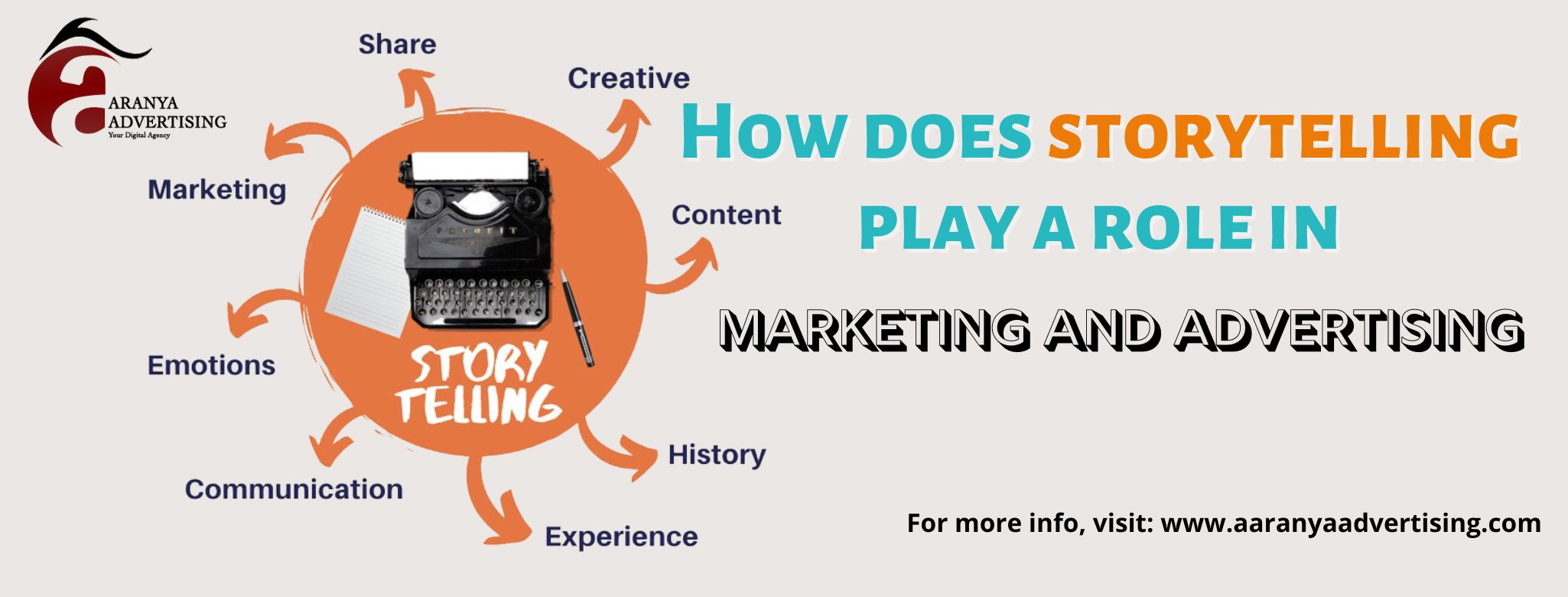How Does Storytelling Play a Role in Marketing and Advertising?
1. Introduction
Marketing and advertising have become really important for businesses to attention to their target audiences. Amidst the constant bombardment of information and advertisements, there is a powerful tool that stands out—storytelling. This article explores the significant role storytelling plays in marketing and advertising, and how it creates an emotional connection with consumers, builds brand identity, and fosters memorable advertising campaigns.
2. The Power of Storytelling
Storytelling has the power to impress any human being whether it’s your audience or investor. Human beings are naturally drawn to stories; they captivate our imagination, trigger emotions, and leave a lasting impact. For marketers and advertisers, this presents an invaluable opportunity to communicate their brand’s essence in a way that transcends traditional promotional tactics.
3. Emotional Connection with Consumers
Storytelling goes beyond merely presenting facts and features; it allows brands to connect with their consumers on an emotional level. By sharing relatable stories and experiences, brands can forge a deeper bond with their audience, leading to increased loyalty and advocacy. Emotional sentiments play an important role in decision-making, and when customers get emotionally connected to a brand, they are making a purchase and remain loyal over time.
4. Building Brand Identity
In a crowded marketplace, establishing a unique brand identity is essential for standing out from the competition. Storytelling provides a means to showcase a brand’s personality, values, and mission. A compelling narrative can shape the way consumers perceive a brand, creating a lasting impression that sets it apart. This differentiation is crucial for brand recall and preference, driving long-term success.
5. Creating Memorable Advertising
Traditional advertising methods often fade into the background due to their repetitive and intrusive nature. Storytelling, on the other hand, weaves advertisements seamlessly into engaging narratives, making the message more memorable. Through captivating stories, advertisements become less interruptive and more enjoyable for the audience, increasing the likelihood of retention and recall.
6. Utilizing Storytelling Across Platforms
With the digital landscape offering multiple platforms, storytelling can be adapted to suit various mediums, such as social media, blogs, videos, and podcasts. Brands can leverage these channels to tell their stories creatively and reach a broader audience. The versatility of storytelling allows marketers to tailor their content to fit the preferences and behaviors of different target demographics.
7. Storytelling in Content Marketing
Content marketing thrives on storytelling. Brands can stand out in the crowd via worthy content that resonates with their audience. No matter what type of content it is, storytelling elevates its value, enabling it to be shared and driving organic growth.
8. Humanizing Brands
In the digital realm, where interactions are often transactional, storytelling humanizes brands by giving them a relatable voice. When consumers see the people and values behind a brand, they perceive it as more approachable and trustworthy. Humanized brands build stronger connections, leading to increased customer loyalty and advocacy.
9. Inspiring Action
An engaging story has the power to inspire action. Whether it’s encouraging customers to try a new product, support a cause, or share the brand’s story with others, storytelling is a catalyst for meaningful engagement. By incorporating calls to action within their narratives, marketers can drive conversions and achieve their business objectives effectively.
10. Storytelling Metrics and Analytics
The effectiveness of storytelling can be measured through various metrics and analytics. Analyzing data on engagement, reach, and conversion rates allows marketers to refine their storytelling strategies continually. This data-driven approach ensures that brands stay relevant and connected to their evolving audience.
11. Crafting a Successful Story
A successful brand story requires careful crafting. A brand story must be authentic, relatable, and emotionally compelling, leaving a lasting impression on the audience. Marketers will find this best by understanding their essence, identifying their target audience, and aligning them with the brand’s value and purpose
12. Understanding the Audience
Central to effective storytelling is a deep understanding of the target audience. Marketers must delve into their customers’ preferences, pain points, and aspirations to create narratives that resonate. By tailoring stories to address the needs of their audience, brands can foster stronger connections and drive engagement.
13. Incorporating Values and Purpose
Storytelling is a powerful vehicle for conveying a brand’s values and purpose. Brands that align their narratives with social causes or sustainability efforts not only connect with conscious consumers but also inspire positive change. Consumers are increasingly drawn to brands that stand for something beyond profit, making purpose-driven storytelling a potent marketing tool.
14. Choosing the Right Medium
Different mediums evoke varying emotions and responses. Choosing the right platform for storytelling is essential in delivering the intended message effectively. Whether it’s a heartfelt video, an impactful blog post, or an eye-catching visual, selecting the appropriate medium enhances the story’s resonance.
15. Conclusion
In conclusion, storytelling plays a vital role in modern marketing and advertising strategies. It enables brands to create an emotional connection with consumers, build a distinctive brand identity, and craft memorable advertising campaigns. By utilizing storytelling across various platforms and understanding their audience, marketers can inspire action and foster long-term loyalty. The stories are still a powerful marketing tool, especially in today’s competitive world.
FAQs
- How can storytelling benefit my brand?
Storytelling humanizes your brand, connects emotionally with consumers, and differentiates you from competitors. It creates a strong brand identity and inspires action from your audience. - Can storytelling be used in content marketing?
Absolutely! Storytelling enhances content marketing efforts by making the content more engaging, shareable, and memorable. - How do I measure the success of my storytelling efforts?
You can measure storytelling success through metrics like engagement, reach, conversion rates, and customer feedback. - What makes a compelling brand story?
A compelling brand story is authentic, relatable, aligned with your brand’s values, and emotionally impactful. - Is storytelling only effective in specific industries?
No, storytelling is a versatile tool that can be effective across various industries




